A Royal Netherlands Air Force (RNLAF) F-35A has received a drone kill marking after shooting down a Russian drone during the September 9–10 incursion into Polish airspace.
The incident, which saw around 23 drones cross from Belarus into Poland, triggered a NATO-wide Quick Reaction Alert and was described by Polish leaders as an “unprecedented case of an attack” on NATO territory.
The engagement was carried out by an F-35A of the 313th Squadron, deployed to Poland as part of NATO’s enhanced air policing mission. The Dutch Ministry of Defence later released an image showing a white drone silhouette painted below the canopy rail of the aircraft, marking the first confirmed combat kill for a Dutch Lightning II.
According to Polish officials, the drones entered Poland around 23:30 local time on 9 September, forcing the closure of Warsaw International, Warsaw Modlin, Rzeszów–Jasionka and Lublin airports. At least four drones were shot down, most by Dutch fighters. Analysts later identified several of the drones as Gerbera-type decoys, apparently designed to test allied defences and disrupt civil aviation.
Defence Minister Ruben Brekelmans, who visited the Dutch F-35 detachment in Poland days after the incident, praised the professionalism and teamwork involved. “Russia’s reckless aggression continues,” he said. “By stationing F-35s in Poland, the Netherlands is demonstrating its readiness with allies, because NATO’s eastern border is also our security border.” He highlighted not only the role of the pilots, but also the mechanics and ground crews, who ensured the jets were combat-ready.
The deployment of Dutch F-35s to Poland began on 1 September and will run until December, with the aircraft tasked to protect NATO airspace and deter further Russian incursions. From December, the Netherlands will also reinforce the mission with Patriot surface-to-air missiles, NASAMS, and counter-drone systems, bolstering Poland’s role as a logistics hub for support to Ukraine.
The September drone incursion marked one of the largest airspace violations by Russia since the start of its invasion of Ukraine. Poland invoked Article 4 of the NATO treaty in response, warning allies that Russian and Belarusian military activity represented an escalating threat. In the days after the incident, Russia and Belarus staged large-scale joint exercises, while NATO launched Operation Eastern Sentry to strengthen its air defences across the eastern flank.
For the Royal Netherlands Air Force, the kill marking underscores both the combat credibility of the F-35 and the country’s willingness to take an active role in Europe’s collective defence. The F-35A, with its advanced sensor fusion and stealth, is optimised for detecting and engaging drones that might evade older radar systems. Dutch officials stressed that its deployment has already proven vital in securing NATO’s skies against Russian provocations.



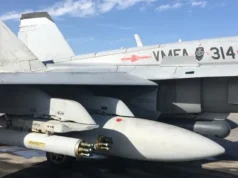

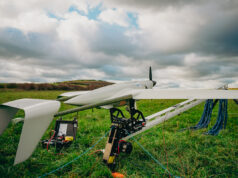
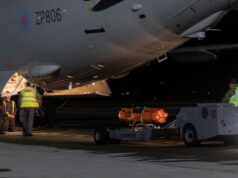
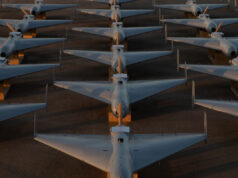
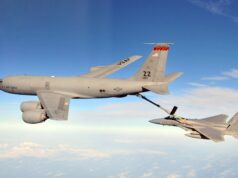
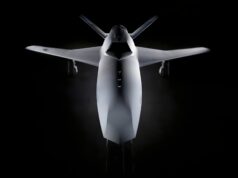

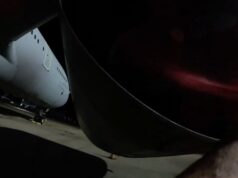
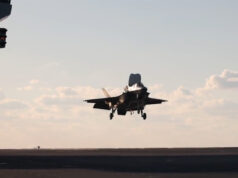

Not sure shooting down a $1,000 drone with an F35 and a missile costing north of $1,000,000 will be affordable in the long term.
100 drones and most European air forces will be running out of missiles.
On news yesterday that various anti drone defences are being built up in Poland in particular, including small upgraded rocket systems, up to 30 odd per launch aircraft and anti drone counter measure ground equipment. Takes time to build these things up on long borders, especially as Europe starts from a very low base of complacency, equally experience and new capabilities will and are being developed. In the meantime if nothing else it’s important to show Russia we are taking matters seriously, which short term is well worth the cost especially as it trains pilots and tests the missile capability.
Thats important, there is a very interesting bit of infrastructure red based video going around presently as shown at a Congressional hearing of a Hellfire from a Reaper engaging a ‘UAP’ and failing (apparently) to bring it down leading to all manner of speculation about alien tech blah, blah, blah. Read a very interesting take on Sandbox about this putting the matter into perspective. A Hellfire is anything but ideal for this job if this object was in fact a drone, the fuse (built for armour) with no proximity capability needs the relative effect of a car hitting a wall to actually go off. US pilots off Yemen have dropped guided bombs with proximity fuses and fragmentation charges on drones there with mixed results, one pilot shocked to see a drone fly out of a cloud of exploding bomb seemingly unharmed. I say this to show that drones are no easy target and as yet no single best practice method of dealing with them so any experience gained using a range of weapons and countermeasures is well worth pursuing as I hope I have shown with these examples, what might seem a near fall proof answer may not be as fall proof in real time operation. New adapted weapons, cheap but mostly effective will need to be brought to the fore and the multiple rocket pod based aerial system, thought to be obsolete in recent times is likely to find a new and important life in this environment with unguided rockets gaining some sensor guidance upgrades. Certainly till electronic and laser weapons are perfected in numbers. I note there was a demonstration in the US recently of an upgraded Leonidas microwave weapon knocking out 49 drones yet is claimed to be safe to humans and extremely focused so won’t have unwanted effects on other equipment. That said we have had demonstrations for years so who knows when they will make an impact where required.
Was it shot down with a missile or some other form of weapon?
Did they say what weaponry was used to take the drones down? Might just have been cannon rounds 🤔
Drone is probably too small to shoot down with cannon rounds, then there is the liability of where those cannon rounds eventually land. It could be 10km away. With a missile they have a better idea id where the debris will fall.
Anyone know what the Drone was or what weapon was used ?
It does help to know these details rather than assume.
Was it Canon or Sidewinder . Was it a small Polystyrene Drone or something bigger armed and dangerous ?
What happened to the other drones ?
So many questions, so early in the morning !
Pays to wake up properly , I see it says in the article what the drone was now, a Gerbera which is a small copy of the Shahed but busing Chinese components and Plywood/Polystyrene. $10,000 per unit (ish).
“Busing” ?. bugger me, I’m going back to bed. zzzzzz
using
Yeah, always thought drones were attacking from Belarus..
At the time clear flight routes were displayed on here.
It comes to it that we really need some small missiles…Martlet perhaps but with self seeking heads able to be carried in bunches, (like Brimstone) in order to deal with these smaller targets in a border situation.
How useful is a laser guided missile like Martlet or APWKS(or woteva)when fired from a high speed aircraft. Is there sufficient distance to aquire and prosecute targets before getting too close?
Wildcat I can understand…can almost hover stationary and engage targets rapidly …but an aircraft doing 400+mph? Ok for one…perhaps two? Or do you have to fly broadside on to keep the distance?
AA
Even Martlets are quite expensive compared to the cheap drones that the Russians are using. They can produce them in volume for very little cost.
This is why it’s going to be so important to get directed energy weapons onto our platforms.
If it’s possible to fit it onto our Typhoons it’d be better than having to wait for Tempest/GCAP
It really depends on the drone, an Iranian data leak a year ago put the cost of the Shahed 136 at $180,000. Some of the new jet powered drones may well exceed that, many of the lower end drones will be far below that price point. At reportedly £20,000-£100,000 a shot depending on what certain exports have reportedly paid LMM is economical enough to be used against the sorts of drones that carry significant warheads and are being packed with things like EW systems to prevent soft kills against them.
Absolutely,
There is a big range of drones and the costs vary. At the bottom end of the scale are the Gerbera decoys that are made on the cheap with polystyrene, plywood and Chinese prop engines. These reportedly cost around US$10k which will be less than the cost of a Martlet.
On the other hand, the cost of a firing a directed energy weapon will be between a few pence and a tenner.
With the strategy now being to overwhelm air defences with masses of decoys mixed in with the drones with warheads, it’s going to be really expensive to use missiles to shoot down drones.
Of course, that’s based on the assumption that we can make the weapon small enough to fit onto a fighter and that the energy requirement is within the engine’s capabilities.
Gloster Gladiators will do it….
Now you’re talkin! These drones that cost pounds need a round that cost pounds to knock them out. A well placed .303 round could do it, a bit tricky getting enough Gladiators airworthy though and in the right place at the right time for that!
There used to be one or two in boxes in Malta….wonder if they are still there?
Bit melodramatic. Now an ME109. That would be something.
They had crap visibility, perhaps something more like Whirlwind or a Hornet. As they had their guns concentrated in the nose and had much better visibility.
Faith, Hope and Charity”
Sounds a bit like todays RAF !
Indeed
OT, but air.
RAF withdrew the Reaper force 30th September.
How many Protector have arrived?
Not a peep from the MoD or the RAF in tribute to the service they gave….thinking cynically, to hide the usual gapping.
With even the possibility of us supplying monitoring forces in post-war Ukraine, why get rid of the Reapers right now? Somebody’s not thinking clearly. That might be me, of course, but I doubt it.
It seems to be an allergy of the MoD that,for whatever reason, good kit gets thrown away?
Certainly, a constant trend of withdrawing assets before a replacement is up to speed.
One for Mr Healey to answer, if only he allowed himself to be presented with questions of that nature by a journalist who might actually know what they’re about.
Surely an asset with only 10-15 years life could be put to use somewhere for HMG ….. English Channel, Straits of Hormuz. Use some of them on overland operations and put Protector to more dedicated maritime patrol use? Is it a case of, owing to their usual mode of operation, there flight hours are all used up?
time to reopen Spitfire assembly lines? probably better for recruitment since some good old fashionned BFM is a lot mode fun for pilots than BVR on simulators
Can’t see the picture clearly for the writing